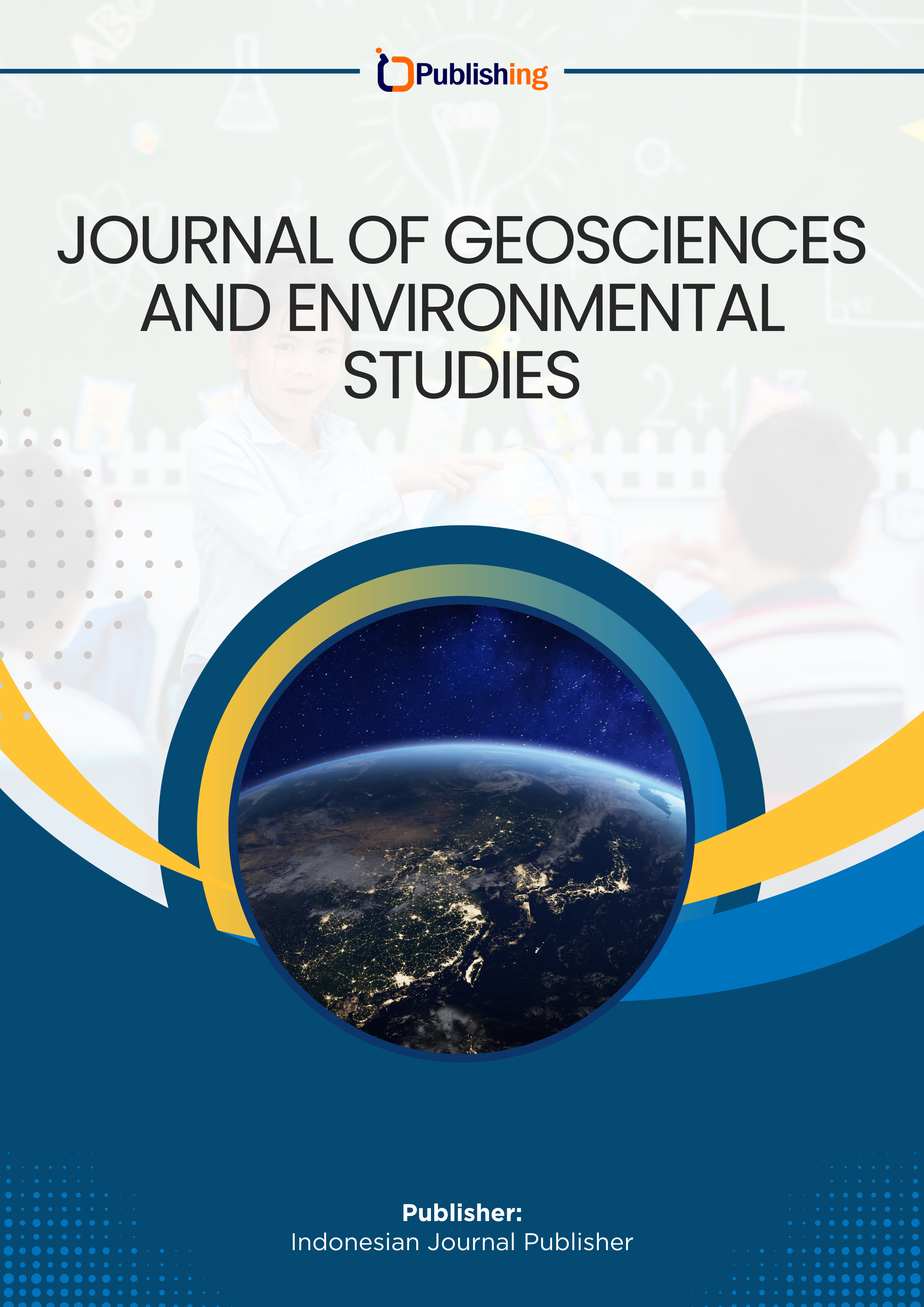Spatial Assessment of the Conformity Between Educational Facility Needs and Provision in Surakarta City Based on SNI Standards, 2004–2024
DOI:
https://doi.org/10.53697/ijgaes.v2i2.4064Keywords:
Educational Facilities Needs, Indonesian National Standards, Spatial Analysis, Facilities Fulfillment Gap, Surakarta CityAbstract
Surakarta City, as one of the strategic service centers in Central Java Province, is facing challenges in realizing equal distribution of educational facilities by the Indonesian National Standard (SNI). This study aims to evaluate existing conditions, gaps in needs, and the level of conformity between the provision of educational facilities and applicable standards. The approaches used include quantitative descriptive methods, spatial analysis, buffering techniques, Average Nearest Neighbor Analysis (ANN), Kernel Density Estimation (KDE), and descriptive qualitative analysis. The findings show a striking inequality in the distribution of educational facilities between regions, with a higher concentration of facilities in the city center compared to the outskirts. Through ANN and KDE analysis, it was found that the distribution pattern of educational facilities varies, from clustered, random, to scattered patterns, depending on the level of education. The shortage of facilities was recorded at the elementary school level of 140 units, junior high schools 49 units, and senior high schools/vocational schools 41 units. Based on these results, it is recommended that a strategy be developed to distribute educational facilities more evenly, considering spatial needs and demographic dynamics. This finding is an important foundation in planning sustainable education based on a spatial approach in Surakarta City.
References
Anderson, R., & Thomas, P. (2017). Infrastructure and educational access: How facilities shape service reach in urban areas. International Journal of Educational Development, 54, 45–53.
Arikunto, S. (2008). Manajemen pendidikan. Rineka Cipta.
Badan Pusat Statistik. (2024). Surakarta, Jawa Tengah, Indonesia.
Chang, H. S. (2011). Exploring an integrated method for measuring the relative spatial equity in public facilities in the context of urban parks. Cities, 28(5), 361–371. https://doi.org/10.1016/j.cities.2011.04.002
Chen, L., & Hu, W. (2018). Integrating regional socioeconomic factors in educational facility planning. International Journal of Educational Development, 65, 120–128.
Chen, L., & Wang, Z. (2021). Private sector dominance and educational facility dispersion: A case study. Cities, 115.
Christaller, W. (1933). Central places in southern Germany.
Christamara, F. W. (2021). Analisis kesesuaian persebaran daerah asal peserta didik dengan zonasi sekolah menengah atas di Kota Surakarta [Undergraduate thesis, Universitas Sebelas Maret].
Daniels, P., & White, D. (2012). Urban planning and educational facilities. Blackwell.
Dinas Komunikasi, I. S. (2022). Pemerintah Kota Surakarta. https://surakarta.go.id/
Djalil, H., Mulyadi, M., & Syamsuar, S. (2019). Ketimpangan pendidikan dan upaya pemerintah mengatasinya. Jurnal Pendidikan dan Kebijakan, 5(2), 101–115.
Garcia, M., & Torres, R. (2019). Examining the suburbanization of private schools in Latin American cities. Cities, 92, 39–47.
Kementerian Pendidikan dan Kebudayaan Republik Indonesia. (2018). Sistem zonasi mempercepat pemerataan di sektor pendidikan. https://www.kemdikbud.go.id/main/blog/2018/06/kemendikbud-sistem-zonasi-mempercepat-pemerataan-di-sektor-pendidikan?utm_source=chatgpt.com
Lee, C., & Kim, J. (2017). Private sector response to urbanization: Facility expansion and market adaptation. Urban Studies, 54(10), 2304–2321.
Lestari, E. (2021). Pertumbuhan penduduk dan infrastruktur dasar. Jurnal Pembangunan Berkelanjutan, 8(4), 300–315.
Lu, H., & Zhang, W. (2018). Public facilities distribution in urban areas: Influence of land use and population density. Sustainable Cities and Society, 39, 123–130.
Miller, D. (2017). Trends in educational facility distribution. Education Policy Analysis Archives, 25(6), 115–131.
Morlok, E. K. (2014). Introduction to transportation engineering and planning. McGraw-Hill.
Nugroho, B., Yoto, & Widiyanti. (2021). Relevansi sekolah menengah kejuruan terhadap potensi wilayah. Jurnal Pendidikan: Teori, Penelitian, dan Pengembangan, 6(8), 1175–1181. http://dx.doi.org/10.17977/jptpp.v6i8.14945
Pratama, Y. (2018). Persebaran penduduk dan tantangan penyediaan sarana di Indonesia. Jurnal Geografi, 39(1), 65–78.
Qiu, D. (2020). Challenges to central place theory in the modern city: An examination of educational facility distribution. Journal of Planning Education and Research, 40(4), 450–468.
Rencana Tata Ruang Wilayah Jawa Tengah Tahun 2009–2029. (n.d.).
Smith, A. (2020). Rural-urban disparities in educational resources. International Journal of Educational Development, 40(1), 76–89.
Smith, A., & Johnson, B. (2020). Assessing educational facility distribution in urban areas: The role of regional demand and infrastructure. Cities, 107, 76–85.
Sukamto, A. (2018). Pengaruh pertumbuhan penduduk terhadap penyediaan sarana pendidikan. Jurnal Pendidikan, 10(2), 123–135.
Susanti, D. (2020). Pengaruh struktur usia penduduk terhadap kebutuhan sarana di wilayah perkotaan. Jurnal Demografi Indonesia, 45(1), 45–58.
Susanto, T., & Widyastuti, N. (2021). Dampak sekolah swasta terhadap pemerataan pendidikan di Indonesia. Jurnal Pendidikan Indonesia, 9(3), 78–89.
Suyanto, S. (2013). Manajemen pendidikan di Indonesia. Gadjah Mada University Press.
Thunen, J. H. (1926). The isolated state. Pergamon.
Tilaar, H. (2006). Manajemen pendidikan nasional: Kajian pendidikan masa depan. PT Rineka Cipta.
Tilaar, H. A. (2004). Membangun pendidikan nasional: Paradigma baru. Rineka Cipta.
Wang, J., & Liu, X. (2018). Evaluating urban location efficiency: A multi-criteria framework for accessibility and environmental sustainability. Journal of Transport Geography, 70, 50–59.
Wang, S., & Zhao, Y. (2016). Urban facility distribution: The impact of land use and demographic dynamics. Cities, 63, 45–55.
Wang, S., Li, Y., & Chen, D. (2019). Social equity and the spatial distribution of educational facilities in urban areas. Journal of Urban Planning and Development, 145(2).
Weimer, D. L., & Vining, A. (2017). Policy analysis: Concepts and practice. Routledge.
Wiseka, S. A. (2018). Evaluasi kapasitas dan jangkauan pelayanan fasilitas pendidikan. Media Ilmiah Teknik Industri, 17(1), 71–77. https://doi.org/10.20961/performa.17.1.19056
Wu, F., & Luo, Y. (2016). Private sector roles in urban education development: Challenges and opportunities. Urban Studies, 53(4), 567–583.
Zhang, W., & Zhao, Y. (2020). Optimizing the spatial allocation of public educational facilities: A GIS-based approach. Journal of Urban Planning and Development, 146(4).
Zhao, Y., & Fang, H. (2018). Bridging the educational service gap: The role of private schools in rural and remote areas. International Journal of Educational Development, 62, 1–9.
Zhu, X., & Guo, Y. (2018). Urban facility distribution and land-use dynamics: Evidence from spatial analysis. Urban Studies, 55(3), 619–637.
Downloads
Published
How to Cite
Issue
Section
License
Copyright (c) 2025 Elza Henvita Putri, Rr. Ratri Werdiningtyas, Candraningratri Ekaputri Widodo

This work is licensed under a Creative Commons Attribution-ShareAlike 4.0 International License.














